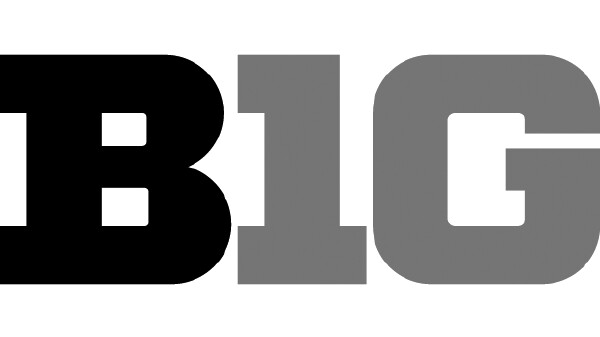Getting Too Big?
how changing NCAA conferences could affect the games

A co-worker of mine recently made an observation about the Big Ten Conference logo. The logo is stylized as “B1G” – no reference to the number “ten” included. The Big Ten – I mean, B1G – has been de-emphasizing “ten” since the conference expanded to eleven teams in 1993, but the latest logo revision from last year’s conference’s increase to twelve members may have hinted a larger goal. The co-worker noted how the 1 and G look an awful lot like a 16, perhaps presaging a time in the near future when the Big Ten will be sixteen members-strong.
Is a sixteen-member Big Ten a bloated notion? Not with recent news that the conference will be adding the University of Maryland and Rutgers University for the 2014-15 season, resulting in a fourteen-team conference. You might ask, Why would a conference in the Upper Midwest add teams from the east coast? Why expand at all?
College conference expansion is driven by money and football. The NCAA requires conferences to have at least twelve members to conduct a conference championship game, which really serves as a revenue generator for the conference through television broadcast rights. Coaches are not keen on the games, as they have a history of knocking out national championship contenders right before the bowl season begins, and putting perhaps the not most-deserving teams into a conference’s main bowl: witness a 7-5 Badger team getting the Big Ten’s Rose Bowl slot. However, the schools and the conference organization are richer as a result, and that is what matters most.
You might ask, Why would a conference in the Upper Midwest add teams from the east coast? Why expand at all? College conference expansion is driven by money and football.
Why go beyond the twelve teams currently comprising the Big Ten? The answer is even more money. B1G Commissioner Jim Delany said a prime reason for adding Maryland and Rutgers is “demographics” – the demographics of wealthier college football fans from the New York and Washington-area markets seeing their cable TV rates increase when the Big Ten Network is added to their lineup so they can watch Terrapin and Scarlet Knight football games. The issue is not adding high-quality football programs; Maryland has been historically below-average, and Rutgers, while doing decent now, was long-derided as one of the worst programs in the nation. The issue is not geography; imagine travel costs for the Badger volleyball team now having to fly to D.C. and Newark with a limited budget. The issue is almost entirely new money opportunities for a cable network.
Why stop at fourteen when sixteen is possible? The conference tried for years to get regional high-profile independent Notre Dame, though the school’s new affiliation with the Atlantic Coast Conference likely ends that dalliance. Then again, Maryland was a core member of the ACC dating back six decades, so the Fighting Irish do not exactly have strong ties to their new home.
There is a point to be made that the pool of high-quality football talent is diminishing in the Upper Midwest, and this expansion will help recruit such players that could help a B1G school get into the National Championship – a game that perennially features at least one team from the Southeastern Conference. Yet this seems a bonus benefit to the financial reason for expanding.
My enthusiasm for Big Ten sports went down some upon hearing the news of this expansion. You and I have grown-up with our regional teams and rivalries: the Border Battle, the Badger-Hawkeye games and the like. Expansion is not necessarily bad, but adding two teams without much noted athletic prestige (save for Maryland’s men’s basketball program) from half a country away dilutes the character of our regional college sports experience. Are you revved-up for that big Wisconsin-Rutgers B1G showdown game at Camp Randall a few years from now? No? Well, perhaps you are licking your chops at easy wins for the Badgers in football, but – as the recent departure of Bret Bielema shows – you can never be too sure of the future in sports.
I am not inherently change-averse, though I do prefer my traditions. Change must be smart. Change must make progress. I fear that this change – a change that will produce a lot of the other kind of change – will lead me to change my channel in autumns to come.




















